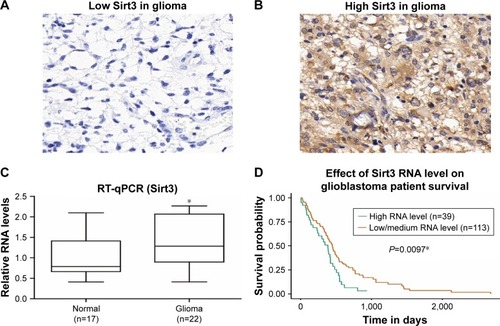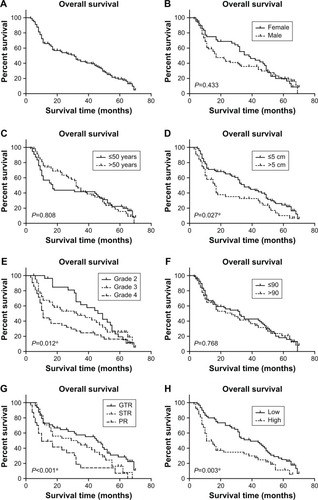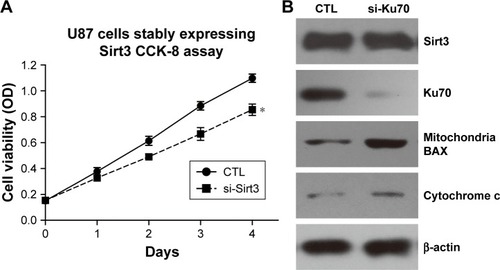Figures & data
Table 1 The correlations between clinical parameters and Sirt3 expression in glioma patients
Figure 1 Sirt3 is upregulated in glioma tissues.
Abbreviations: IHC, immunohistochemistry; RT-qPCR, quantitative real-time PCR; Sirt3, sirtuin 3.

Table 2 Univariate analysis for overall survival of glioma patients
Figure 2 Analyses of the overall survival of glioma patients.
Abbreviations: GTR, gross total resection; PR, partial resection; Sirt3, sirtuin 3; STR, subtotal resection.

Table 3 Multivariate analysis for the prognostic factors of glioma patients
Figure 3 Sirt3 enhances glioma cell viability.
Abbreviations: BAX, Bcl-2-associated X protein; IB, immunoblotting; IP, immunoprecipitation; NHA, normal human astrocytes; ov, overexpression; si, siRNA; Sirt3, sirtuin 3.

Figure 4 Silencing Ku70 attenuates the pro-proliferative effects of Sirt3 in glioma cells.
Abbreviations: BAX, Bcl-2-associated X protein; CTL, control; si, siRNA.

